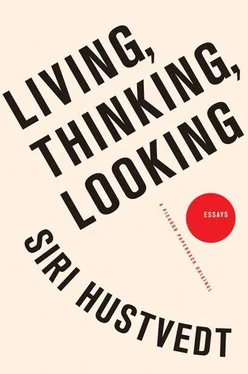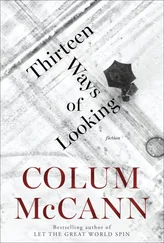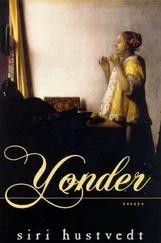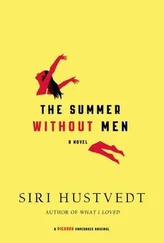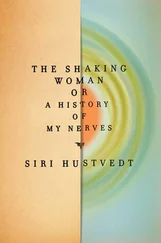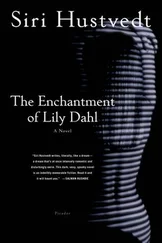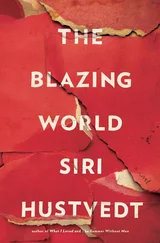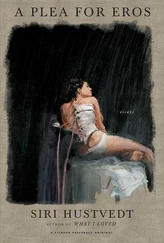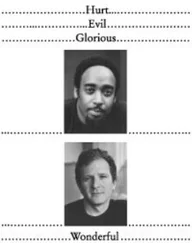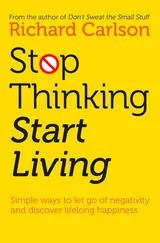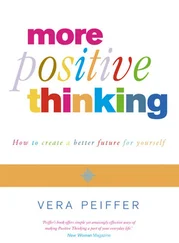Like countless others before and after me, I fell for Katharine Hepburn. I fell for her style. It is hardly news that she was a woman who did not bow to conventional standards, and the way she dressed was a sign of rebellion. There was a masculine quality to whatever she wore, even when she was draped in an evening gown. I remember her in a pair of wide trousers, striding down a golf course with Spencer Tracy in Pat and Mike . And I remember her in Holiday, wearing a gloriously simple black dress with a high neck. No froufrou or silliness for her, no peekaboo blouses or big bows or ridiculous shoes.
I was nineteen when I first saw Holiday, the 1938 romantic comedy directed by George Cukor and based on the play by Philip Barry. As a freshman in college, I had my second moment of profound identification with a celluloid being: Hepburn’s character Linda. What did it matter that she was the offspring of a fantastically wealthy man of business and I the daughter of a not very well paid professor? What difference did it make that she inhabited a mansion on Park Avenue with an elevator, and I had grown up in a modest house with scenic views of corn and alfalfa fields? Wasn’t she misunderstood just as I was? Didn’t she wish desperately to escape all that luxury and superficial nonsense? And even if I had no luxury to flee from, didn’t I, too, fantasize about another life? This kind of thinking, of course, is an essential aspect of what is referred to as “the magic of the movies.”
As I watched entranced, I did not see myself sitting in my seat in my old jeans and sweater, both of which had undoubtedly been purchased on sale. I was not in Minnesota anymore. Some ideal self had been embodied onscreen, a character with whom I shared nothing except an emotional reality: a feeling of being trapped and unhappy. I participated in the fable unfolding before me, and as I participated, I imagined myself in those clothes, Linda’s clothes, not the ones worn by her snooty, shallow sister, whose expensive wardrobe seemed so fussy in comparison. No, I was in that black evening dress, and I was wearing it just as Linda did, wearing it as if it made no difference to me that it was supremely elegant, because I had other more pressing, more important things on my mind. I was falling in love with another free spirit, played by Cary Grant.
Few people are immune to such enchantments, and they long predate the movies. We enter characters in novels, too, and imagine ourselves into their stories and into whatever habiliments they may have on during their adventures, and it is possible for us because we do not have to look at ourselves while we are doing it. When we are invisible to ourselves, every transformation is possible. Movies give visual form to our myriad waking dreams. The marvelous people on the screen take the place of the mirror for a while, and we see ourselves in them. Mirroring is a physiological and a social phenomenon. We are born with the ability to imitate the expressions of others, but we also become creatures of our culture with its countless images of what is chic and beautiful. When we choose what to wear we don’t just choose particular pieces of clothing, we select them because they carry meanings about us, meanings we hope will be understood by other people.
These days, I often find myself buying clothes that look suspiciously like ones I already own. This may sound a little dull and perhaps it is. My body image has changed; I am not the girl of nineteen who sat in the movie theater and watched Holiday anymore. I did leave Minnesota only a few years after seeing that film, and moved to New York City. I broke away from my small town and the constraints of provincial life. It is fair to say that certain movie stars continue to haunt my wardrobe. Katharine Hepburn has been an ideal of tailored beauty whispering in my ear ever since I saw her all those years ago on the screen in that wonderful dress. I eschew frippery and excessive adornment of any kind. I like clothes with a masculine feeling that don’t make me look like a man. I like shoes that I can move and dance and even run in if necessary. Towering heels, platforms, complex straps that resemble fetters are not “me.” I like clothes that preserve and enhance my dignity, but are not so sober and serious that they make me look humorless. This is what I wish to convey when I get dressed. Whether I succeed or not in this endeavor, I honestly don’t know. I don’t see myself often enough. Before I leave the house for an evening out, I check myself in the mirror for just a moment and then I go off, happily ignorant of what I look like when I am living my life.
2011
SOME MUSINGS ON THE WORD SCANDINAVIA
AS A CHILD, I’M NOT sure I even knew what Scandinavia meant. It was shrouded in a cultural mist that somehow wafted over me and mine, but why or how wasn’t at all clear to me. I was already a person divided. A girl living in America with a Norwegian mother and a Norwegian-American father, I spoke Norwegian before I spoke English, but rural Minnesota was my everyday world; Norway was another world. As a four-year-old in 1959, I had spent five months with my mother and sister in Bergen. Until I returned for a year with my family in 1967, Norway lived inside me as a jumble of inchoate fragments — isolated memories (my hands in a gooseberry bush, an orange lying in the snow, the tears of my older cousin at the dinner table), household objects (chests and china, photographs and paintings on the wall), food (especially rice pudding, bløtkake, cream cake, and little chocolates called Twist), my parents’ stories, and a few significant words. During the seven years between childhood visits, I mostly forgot Norwegian.
The advantage of not living in a place is that it becomes pure idea. Under the sway of a homesick mother and a father whose identification with the immigrant community in which he was raised led him to become a professor of Norwegian language and literature, I succumbed to an illusion of an ideal elsewhere, a magic kingdom of trolls and nisse and fiskeboller, of Ibsen, Hamsun, and Munch, a fantastic over there, where the children were happier and healthier, floors were cleaner, and the people kinder and more just. My parents weren’t uncritical of Norway, but they were both prone to a form of nationalism that flourishes in tiny cultures that have been shaped by the humiliations of external control. In the case of Norway, that meant Denmark, and after that, it meant Sweden. At some point, I discovered that together these three comprised Scandinavia. Despite the maniacal flag-waving that took place every May 17 to trumpet our independence from Sweden, it turned out that we were somehow in the same family with them, and not only them, but the Danes, too. It took a while to grapple with this concept, but eventually it penetrated my young mind, and I came to accept it.
The binding principle of Scandinavia is not geography, but language. If you have one of the three languages, the other two can be easily managed with a little work — at least on the page. Danish, so comprehensible to me in print, can quickly become a series of indistinguishable noises in the mouth and throat of an actual speaker, and Swedish, though easier to understand, can also trail off into pleasant music when I’m not paying close attention. And yet so many words belong to all three languages, and more than anything else, it is language that shapes perception of the world, that draws the lines and creates the boundaries that make what is out there legible. It is a legacy of my childhood that I am a Norwegian-American who doesn’t feel quite American but who doesn’t feel quite Norwegian either. If I didn’t speak Norwegian, I would most certainly feel alienated from that country’s culture in a far more fundamental way. It is the language that lures me into feeling the connection to a past that extends backward to a time long before I was born. The vocabulary and cadences of Norwegian continue to live inside me, and moreover, they haunt my English. My prose is decidedly Protestant, and despite the fact that Scandinavia is no longer exclusively Protestant, its mores and culture were profoundly influenced by that iconoclastic, stark, and lonely version of Christianity.
Читать дальше
